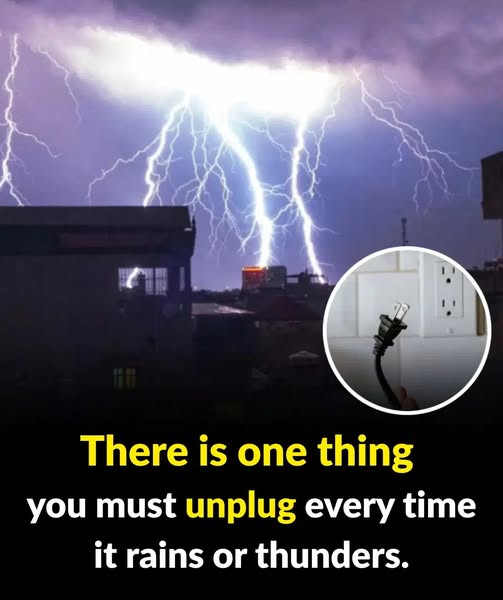
Who hasn’t flinched at the crack of thunder ripping through the sky? It’s a powerful reminder that when a storm rolls in, the danger isn’t just outside—it can strike right inside your home.
Lightning can send a powerful surge of electricity through your power lines, destroying electronics, appliances, and more in an instant. The good news? Protecting your home may be as simple as pulling a few plugs.
Why Unplugging Isn’t Optional
Think you’re covered because you have circuit breakers or surge protectors? Think again. These tools offer a layer of defense—but they’re not bulletproof. A lightning strike on a nearby power line, tree, or utility pole can still send a surge straight into your home.
The result?
- Burnt-out TVs
- Fried computers
- Wrecked kitchen appliances
And those repairs? They can cost thousands. Yet the solution is so simple: unplug before the storm hits.
The Devices You Should Always Unplug First
As soon as you hear thunder—or better yet, see a storm alert—unplug these vulnerable items:
- TVs, sound systems, speakers
- Computers, tablets, and phones (especially while charging)
- Kitchen appliances like microwaves, ovens, kettles, and coffee makers
- Large appliances such as washing machines, dryers, and dishwashers
- Outdoor electronics like garden lights or water features
Pro tip: If you’re leaving home and a storm is in the forecast, unplug non-essential devices ahead of time.
Smart Safety Tips for Storm Season
1. Get Your Wiring Checked
Outdated or damaged electrical systems are more vulnerable to surges. Have a licensed electrician inspect your home regularly.
2. Live in a Flood Zone?
If water starts entering your home, turn off your main power immediately. Electricity and water are a deadly combination.
3. After the Storm
If you’ve had flooding or suspect a lightning strike, never turn the power back on until a professional has inspected your system.
Extra Protection: Surge Protectors & Lightning Rods
While unplugging is your first line of defense, these additions offer extra peace of mind—especially in storm-prone areas:
- Surge protectors can absorb some of the excess voltage before it reaches your devices.
- Lightning rods redirect lightning safely into the ground, shielding your home from direct strikes.
The Bottom Line
Storms are unpredictable. But your safety plan doesn’t have to be.
Take a few minutes to unplug the right devices, keep your electrical system in check, and invest in protective equipment. You’ll be protecting your home—and your wallet—from unnecessary disaster.
Next time thunder rumbles in the distance, you’ll be ready.